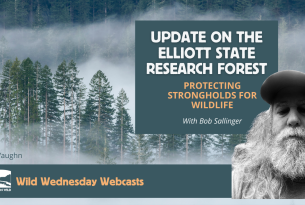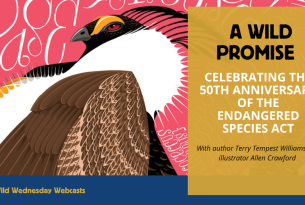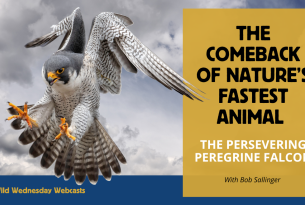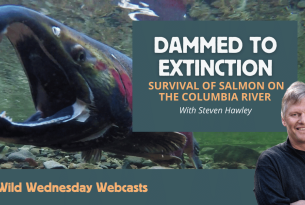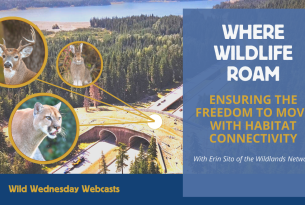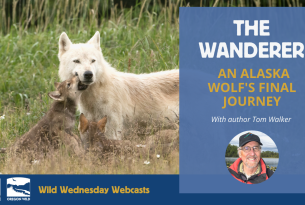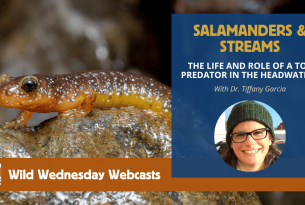Wildlife Webcasts
Webcast: Update on the Elliott State Research Forest
The Elliott State Forest is one of the crown jewels of the Oregon Coast Range. It is a stronghold for federally listed marbled murrelets, northern spotted owls, and Coho salmon, and has some of the last remaining old-growth forests left in Oregon State forests. The Elliott has historically been one of Oregon's most conflicted landscapes, but in recent years, stakeholders have come together to forge a new collaborative path forward.
Webcast: Dammed to Extinction
The early-to-mid 20th Century was marked by an era of dam building across the United States. These dams came at a cost to watersheds, freshwater ecosystems, and indigenous communities. Every year, millions of salmon were blocked from reaching their historic spawning beds, eventually resulting in the collapse of salmon runs across the west. The Columbia River basin was once home to the world's most productive chinook salmon runs. These fish traveled all the way into the central mountains of Idaho to spawn.
Webcast: Marbled Murrelet - A Seabird of the Forest
Enter the mysterious world of the marbled murrelet, a rare seabird that nests in the dwindling old-growth forests of Oregon's Coast Range. For years, scientists struggled to understand where these birds nested - eventually finding them intimately tied to the forest ecosystems of the coast that were also home to salmon, northern spotted owls, and many other species at risk from extensive clearcutting. Out at sea, these birds face a different set of challenges to survival - especially in a warming climate.
Oregon's Orcas: The Southern Residents
Orcas, the largest member of the dolphin family, are instantly recognizable with their distinct monochrome ensemble. Best known for exceptional hunting, this has earned them the title ‘killer whale’. However, behind the nickname the mammals have a fascinating array of aptitudes and strategies – such as extreme intelligence, language, familial loyalty, and sheer athletic prowess – that make them apex predators of the ocean.
The Wanderer: An Alaska Wolf’s Final Journey
Informed by unparalleled access to a research project that studied wolves in Alaska’s Yukon–Charley Rivers National Preserve for more than two decades, award-winning author, photographer, and naturalist Tom Walker shares the story of Wolf 258, nicknamed “the Wanderer.” A GPS collar recorded the animal’s coordinates once a day as it moved through the wilderness, and to the amazement of all, the Wanderer traveled more than 2700 miles in less than six months.
Webcast: Salamanders and Streams - A Top Predator in the Headwaters
From pinky-finger sized to arm-length - salamanders thrive in Oregon's rainforests and waterways. On this webcast, we're joined by Oregon State University professor Tiffany Garcia, who tells the story of torrent salamanders, what makes them special, what habitats they need to thrive, and what conservation concerns there are for these amazing little creatures.


